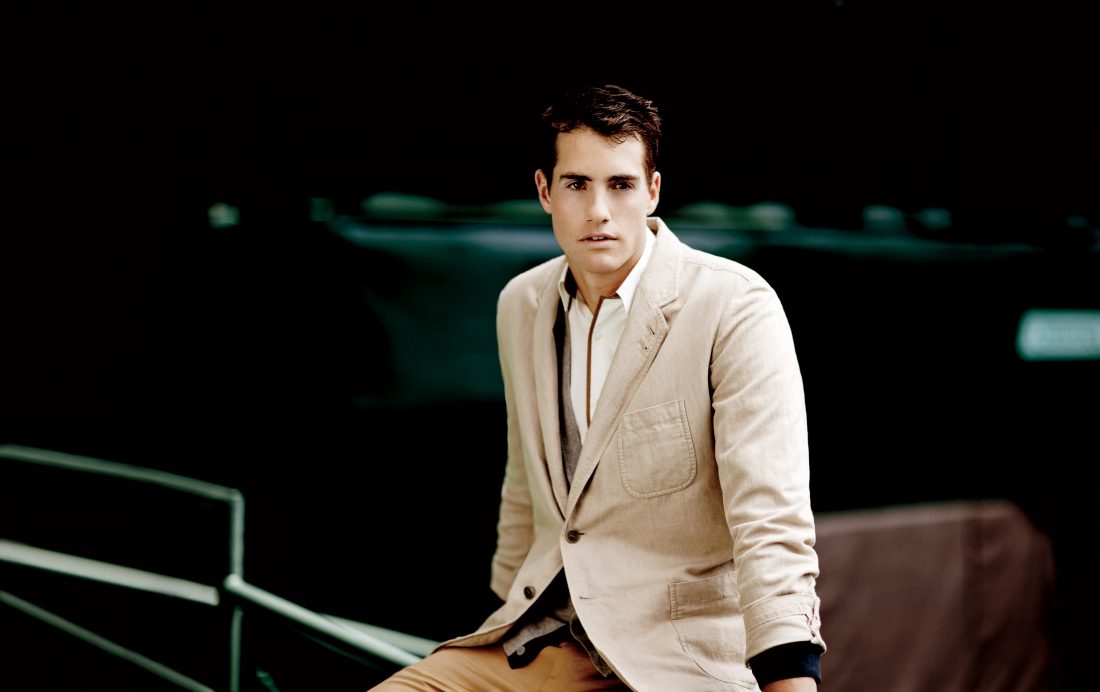Once you win the longest tennis match in history, you rarely get a chance to forget it. “When it happened, I couldn’t really escape from that match,” says John Isner, a twenty-eight-year-old native of Greensboro, North Carolina. “Everyone was talking about it, all the time.”
He was on Letterman, Good Morning America, CNN. He threw the ceremonial first pitch at a Yankees game. All because of one tennis match. The match. Remember? It was in the first round at Wimbledon in 2010, when—like some surreal marathon whose finish line kept receding from view—Isner and Frenchman Nicolas Mahut played for more than eleven hours over three days, only stopping once the final set reached a score of 70–68, which literally broke the scoreboard.
Sure, it made Isner an international celebrity, and for good reason. But John Isner is more than just one match. These days, he’s consistently ranked among the top ten tennis players in the world, routinely beating the likes of Roger Federer and Novak Djokovic, positioning himself to be a major threat at this summer’s Wimbledon and U.S. Open. The latest in a line of players from Ashe to McEnroe to Sampras to Roddick, Isner is now the number one men’s tennis player in America. And he might just be the most singular one yet.

Photo: ©POOL/Reuters/Corbis
Holding Court
Striking a triumphant pose after his epic 2010 Wimbledon win over Nicolas Mahut.
Start with first impressions: Isner stands six feet ten inches tall, a height more commonly found on a basketball court. “I didn’t know I was going to be this tall,” he says. “If someone had told me at fourteen that I’d be six-ten, I might have stuck with basketball, in all seriousness.”
He spent his teenage years doing exactly what other elite young tennis players absolutely never do: He trained at home, played for his public high school, then went to college, for all four years. “He was a huge team guy,” says Will Glenn, associate men’s tennis coach at the University of Georgia, where Isner led the team to a national championship in 2007. “He loves fishing, and he’s a good ol’ boy.”
Manny Diaz, Georgia’s head coach, remembers his time with Isner as “maybe the best three-year stretch in the history of our program” but laughs when recalling the reaction of people who saw Isner with the team. “We always used to get asked if we were a basketball team.”
Isner’s height is part of what contributes to his greatest weapon: a massive serve clocked at more than 149 miles an hour, one of the fastest in the world. Known for being one of the nicest guys on the circuit, he laughs when asked if he ever feels bad about hitting a tennis ball that fast at another human being. Then he stops laughing. “No,” he says. “Never. And I never will.”
Watching the serve unfold is like petting a sleeping tiger, only to have it suddenly awake and shred a passing antelope. Isner is not one of the world’s best tennis players because he’s nice—he’s one of the best because he’s the type of guy who decides, eleven hours into one tennis match, that he’s just going to ignore the fact that he barely has any skin left on his toes and keep playing until he wins.
After seven years as a pro, Isner himself is still a bit incredulous about it all. “I didn’t know I could even be a professional tennis player, honestly,” he says. “All this is actually very, very unexpected.” What’s no longer unexpected, though, is Isner’s continued success. He’s got that lethal serve, and he just keeps getting better. So watch for him to make headlines again this summer—just don’t expect another eleven-hour ordeal. That, Isner says, “is something that certainly won’t ever happen again.”








